|
|
|
Sort Order |
|
|
|
Items / Page
|
|
|
|
|
|
|
| Srl | Item |
| 1 |
ID:
152021
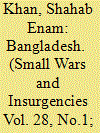

|
|
|
|
|
| Summary/Abstract |
Bangladesh is currently facing an incremental growth of radicalization. This radicalization can be traced back to the country’s early post-Independence years. Over time, political violence, ideological clashes between secular and right-wing ideologies, and weak governance have created conditions for the growth of radical Islam. The public rhetoric on corruption, weakening of democratic institutions, inadequate law enforcement agencies, fragile justice delivery system, fledgling educational and social institutions and growing unemployment provides further space for alternative narratives by extremist ideologues. Home-grown extremist outfits have received ideological and tactical supports from transnational terrorist network such as Islamic State (IS) and Al-Qaeda in Indian Subcontinent (AQIS), but only in a limited manner. The supply and demand side of radicalization in Bangladesh has not yet been addressed by actors such as the government, private sector, civil society and media. The failures in multiple sectors in the state governance have led to a situation where IS and AQIS now see Bangladesh as a potential ground for exerting their supremacy as flag bearers of radical forms of Islam.
|
|
|
|
|
|
|
|
|
|
|
|
|
|
|
|
| 2 |
ID:
152022
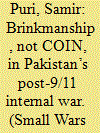

|
|
|
|
|
| Summary/Abstract |
Politics is critical to making sense of Pakistani successes and failures in dealing with non-state armed groups. This includes domestic political currents; regional political currents; and the global impetus of the post-9/11 era. How these currents overlap renders to any reading of insurgency in Pakistan real complexity. This article engages with this complexity rather than shirking from it. Its hypothesis is that while the insurgency bordering Afghanistan has been an epicentre of Pakistani military efforts to fight the Taliban, this theatre is in of itself insufficiently inclusive to grasp the nature of Pakistan’s security challenges and its consequent responses.
|
|
|
|
|
|
|
|
|
|
|
|
|
|
|
|
| 3 |
ID:
152014
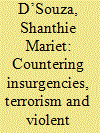

|
|
|
|
|
| Summary/Abstract |
South Asia continues to remains a hotbed of various forms of extremism. Indiscriminate violent terrorism with a strong religious overtone claims the highest number of victims, most notably in Pakistan and India. Islamist Jihadi movements backed by external actors keep the state of Jammu and Kashmir on a boil. Globally inspired Jihad in search of a shariah-ruled state has recurrently raised its head in Bangladesh. Linkages with global jihad and movements that have rallied support to an anti-West platform have escalated their violence potential. They remain a threat not just to the region but have demonstrated an inclination to network with groups having a trans-regional agenda.
|
|
|
|
|
|
|
|
|
|
|
|
|
|
|
|
| 4 |
ID:
152015
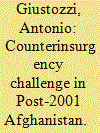

|
|
|
|
|
| Summary/Abstract |
Although the Taliban insurgency was internally divided and unable to coordinate its activities in 2014–2015, the Afghan security forces were not able to contain it and steadily lost ground throughout 2015. Until 2015, there had been little effort to develop an indigenous Afghan counterinsurgency strategy, but a sense of urgency emerged after a string of Taliban victories. At the beginning of 2016, it was still not clear if and when the National Unity Government would be able to produce a counterinsurgency strategy and, in any case, the need for a coherent counterinsurgency approach became questionable as the Taliban appeared to be transitioning towards conventional warfare.
|
|
|
|
|
|
|
|
|
|
|
|
|
|
|
|
| 5 |
ID:
152020
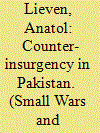

|
|
|
|
|
| Summary/Abstract |
The Pakistani security forces have won their fight against the insurgency of the Pakistani Taliban, though terrorism will remain a serious problem for the foreseeable future. Victory was won not chiefly on the basis of new tactics, but of the recovery of legitimacy for the campaign among the population and the armed forces. This occurred when the war came to be seen as one waged not in the interests of the USA, but for the defence of Pakistan. In Balochistan, the nationalist insurgency has been different from and weaker than that of the Taliban—but may prove longer lasting. Military tactics in Balochistan have closely resembled those of the British Raj, and have been based with some success on fomenting tribal divisions and co-opting tribal elites.
|
|
|
|
|
|
|
|
|
|
|
|
|
|
|
|
| 6 |
ID:
152023
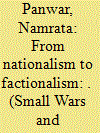

|
|
|
|
|
| Summary/Abstract |
Do ceasefires or peace talks create fragmentation in the insurgent groups? Rather than proposing claims that can offer predictions about armed groups behaviour under ceasefires or peace processes, the analysts tend to focus largely on the dynamics between state and non-state actor. The experts pay little attention to overtime changes in social and local political context which might contribute to propelling a rebel group towards fragmentation and factionalism. The present study intends to fill this gap by exploring the shifting role of public opinion and ethnic support for the peace talks to ascertain whether it can increase the likelihood of factionalism in rebel groups or not. This article applies this approach to the case of Naga National Movement (1947–2015) in India, and finds that the proposed variable appears to have increased the frequency of factionalism in the movement.
|
|
|
|
|
|
|
|
|
|
|
|
|
|
|
|
| 7 |
ID:
152017


|
|
|
|
|
| Summary/Abstract |
India’s success in dealing with insurgency movements was based on adherence to four key rules of engagement: identifying a lead counter-insurgent force, launching population-centric counterinsurgency (COIN) operations, non-use of excessive force and confining the role of the COIN operations to preparing a ground for a political solution. While the country does not yet have a COIN doctrine, these four rules of engagement do constitute what can be referred to a COIN grand strategy. Analysis of the several continuing insurgencies, however, reveals the country’s inability to adhere to the grand strategy. Political considerations, incapacity to manoeuvre through the demands of various stake holders, and even the wish to expedite the decimation of insurgent outfits through a force-centric approach has produced a long history of failures in dousing the fires of discontent.
|
|
|
|
|
|
|
|
|
|
|
|
|
|
|
|
| 8 |
ID:
152016
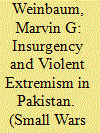

|
|
|
|
|
| Summary/Abstract |
Pakistan has an uneven history of dealing with insurgencies and extremism. This article identifies the various campaigns and policies employed to defeat militants and deal with violent extremism. It describes the major anti-state groups and how Pakistan’s military and civilian leaders, relying on the related strategies of selectivity, gradualism and containment, have allowed militancy and terrorism to thrive. This article finds that while the elites and the public may have belatedly come to appreciate the existential internal threats these groups pose to the country, there are strong reasons to doubt the state’s full commitment to its promises to take meaningful action.
|
|
|
|
|
|
|
|
|
|
|
|
|
|
|
|
| 9 |
ID:
152019


|
|
|
|
|
| Summary/Abstract |
The military effectiveness literature has largely dismissed the role of material preponderance in favor of strategic interaction theories. The study of counterinsurgency, in which incumbent victory is increasingly rare despite material superiority, has also turned to other strategic dynamics explanations like force employment, leadership, and insurgent/adversary attributes. Challenging these two trends, this paper contends that even in cases of counterinsurgency, material preponderance remains an essential—and at times the most important—factor in explaining battlefield outcomes and effectiveness. To test this, the paper turns to the case of the Sri Lankan state’s fight against the Tamil Tiger insurgency, a conflict which offers rich variation over time across six periods and over 25 years. Drawing on evidence from historical and journalistic accounts, interviews, memoirs, and field research, the paper demonstrates that material preponderance accounts for variation in military effectiveness and campaign outcomes (including military victory in the final campaign) better than strategic explanations. Additionally, a new quantitative data-set assembled on annual loss-exchange ratios demonstrates the superiority of materialist explanations above those of skill, human capital, and regime type.
|
|
|
|
|
|
|
|
|
|
|
|
|
|
|
|
| 10 |
ID:
152018
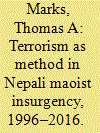

|
|
|
|
|
| Summary/Abstract |
During the period 1996–2006, the Communist Party of Nepal (Maoist) waged overt people’s war to seize state power and institute a new order that realized the party’s understanding of ‘New Democracy’ as posited by Mao Tse-tung. Contextual shifts led to a crucial strategic turning point in September 2005, when the Maoists agreed to a united front with estranged legal parties to oust the monarchy and establish a republic. Though touted as acceptance of political reintegration, the move was tactical rather than strategic. The party had no intention of supporting a parliamentary version of democracy and thus, 2006–2016, engaged in a covert effort to seize power. Central to this effort was the paramilitary Young Communist League (YCL), the members of which responded to inflammatory party verbiage and exhortations with attacks upon rival political actors. These attacks, academically and legally, were terrorism and offered a salient illustration of intra-state unrestricted warfare. Ultimately, organizational, national, and regional circumstances caused the main Maoist movement to move decisively away from its covert approach. By that time, however, radical splinters had embraced the use of terrorism against rival political actors, creating a situation whereby local politics is yet a dangerous endeavor in certain areas and at certain times.
|
|
|
|
|
|
|
|
|
|
|
|
|
|
|
|
|
|
|
|
|